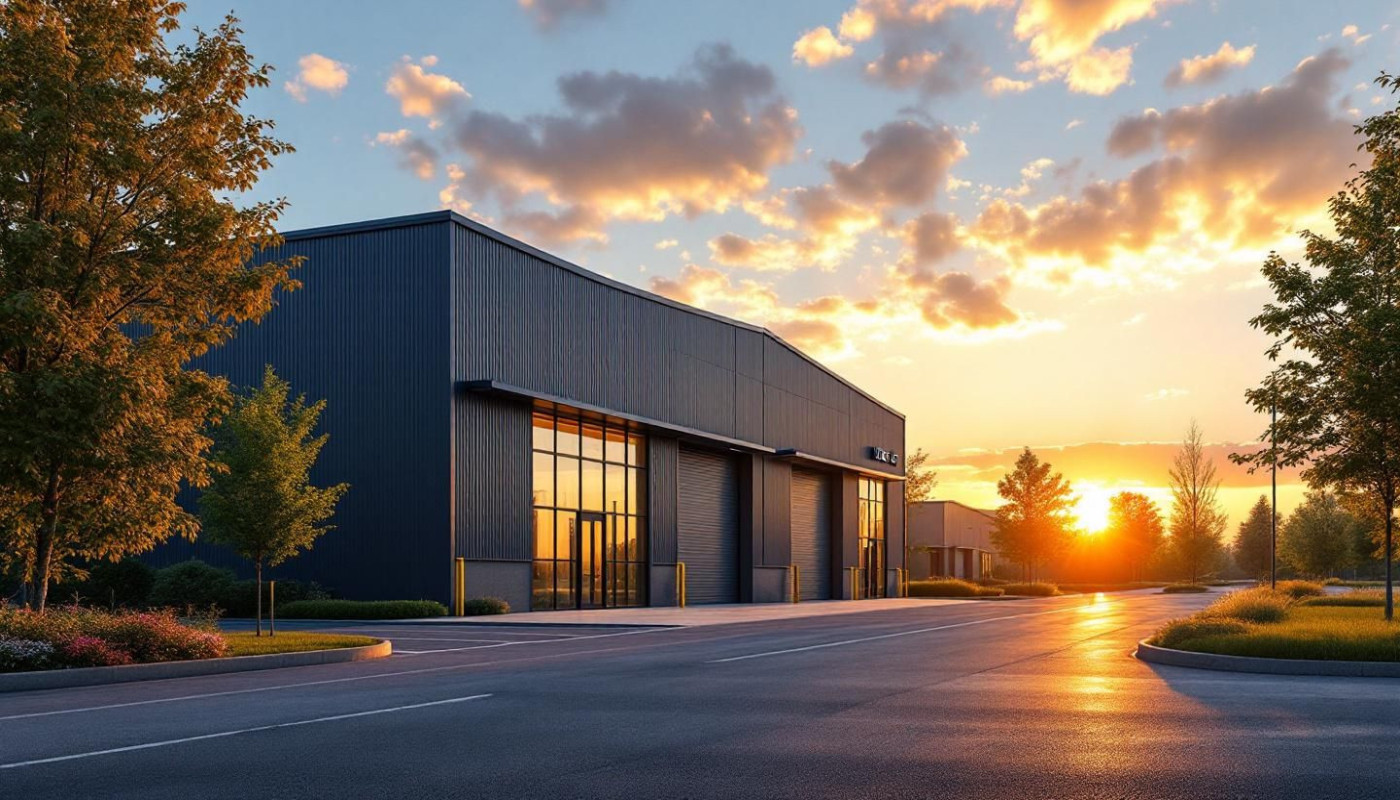Table of contents
The world of real estate investment continues to evolve, with Grade A warehouses emerging as a promising sector for savvy investors. Amidst the rapid growth of e-commerce and the increasing demands of supply chain optimization, the demand for high-quality warehouse spaces is experiencing unprecedented momentum. Dive deeper into this article to explore why investing in Grade A warehouses could be your gateway to stable returns and long-term value.
Why choose grade a warehouses?
Grade A warehouse investment stands out in the commercial property sector due to distinct warehouse features that surpass those of traditional storage facilities. These modern warehouses are characterized by advanced infrastructure, encompassing high ceilings for maximum storage volume, state-of-the-art fire safety measures, and robust flooring capable of supporting heavy machinery and goods. Location is another key differentiator; Grade A warehouses are strategically positioned near major transport hubs, highways, and ports, optimizing logistics operations and reducing transit times. Compliance with international logistics standards ensures smooth supply chain integration, making these warehouses highly attractive for businesses involved in global trade. Features such as cross-docking facilitate swift transfer of goods from inbound to outbound transportation with minimal handling, streamlining operations and reducing costs. For investors, these properties typically deliver higher rental yields and lower vacancy rates, reflecting strong tenant demand driven by e-commerce growth and supply chain modernization. Enhanced asset quality, proven by superior construction and ongoing maintenance standards, secures long-term value and resilience in changing market conditions, making grade a warehouse investment a compelling choice in the commercial property landscape.
Key drivers of investor interest
Several factors have significantly elevated investor interest in Grade A warehouses, reshaping the modern warehouse market landscape. The rapid e-commerce boom stands out as a primary catalyst, with online retail platforms requiring sophisticated facilities to manage inventory turnover and meet growing consumer expectations for swift last-mile delivery. Urbanization also plays a pivotal role, as city populations rise and the need for strategically located storage spaces intensifies, optimizing distribution networks for efficiency and speed. These shifts in consumer behavior and logistics have led to a dramatic surge in warehouse demand, particularly for state-of-the-art facilities designed to support evolving supply chain models. Recent investment trends reflect a keen focus on properties that can accommodate automation, scalability, and sustainability, making Grade A warehouses a preferred asset class for both institutional and private investors seeking long-term stability and growth. As supply chain complexities increase, the strategic value of prime warehouse assets has never been higher, reinforcing their position at the forefront of real estate investment opportunities.
Financial performance and returns
Investing in Grade A warehouses presents investors with the prospect of attractive warehouse yields and strong real estate returns. These premium logistics assets are often characterized by long-term leases with reputable tenants, providing predictable rental income streams that are vital for calculating net operating income (NOI). The reliable nature of these contracts helps underpin stable cash flow, reducing vacancy risks and enhancing investor confidence. In addition, Grade A warehouses are located in strategic, high-demand areas, which can lead to substantial capital appreciation over time as supply constraints and e-commerce growth bolster asset values. Despite these benefits, it is necessary to consider risk factors such as market volatility, evolving tenant requirements, and potential shifts in supply chain dynamics, which can impact occupancy rates and rental growth. Careful due diligence and proactive asset management are required to optimize returns and mitigate these challenges in an ever-changing real estate landscape.
Factors for successful investment
For those seeking to optimize returns in Grade A warehouses, a strategic approach centered on thorough due diligence, warehouse location, tenant profile evaluation, and regulatory compliance is decisive. Careful due diligence, including financial analysis and legal checks, reduces investment risk by uncovering hidden liabilities and validating the credibility of the asset. The choice of warehouse location significantly affects both market demand and operational efficiency, with proximity to transport hubs and urban centers offering heightened leasing potential and resilience against economic cycles. Assessing the tenant profile is equally vital; stable, creditworthy tenants, especially those utilizing build-to-suit facilities, can guarantee long-term rental income and minimize vacancies. Navigating the landscape of regulatory compliance, from zoning laws to environmental standards, safeguards against costly legal challenges and ensures sustainable operations. To enhance understanding of these procedures, look these up, which provides insights from seasoned professionals in the sector. These measures, collectively, fortify long-term success and mitigate the impact of unforeseen market shifts.
Future outlook and emerging opportunities
The landscape of Grade A warehouses is poised for transformative growth, driven by rapid advancements in automation, the accelerating pace of green logistics, and shifting global trade dynamics. Warehouse trends increasingly emphasize integration of robotics, real-time inventory systems, and artificial intelligence, all of which are reshaping operational models and offering investors attractive future investment prospects. Sustainability is becoming a core value, with demand rising for facilities that meet LEED certification standards, reflecting the growing appeal of sustainable real estate. As e-commerce and supply chain resilience continue to dominate global strategy, green building practices and smart design principles are not only enhancing efficiency but also elevating long-term asset value. Forward-thinking investors are aligning with these developments, seeking assets that blend automation capabilities, energy efficiency, and adaptability to changing trade requirements. In light of these advancements, Grade A warehouses present robust opportunities for those looking to capitalize on the intersection of technology, sustainability, and global commerce.
Similar

Understanding Legal Entity Identifiers: Benefits And Registration Process

Exploring The Tax Advantages Of Establishing A 501(c)(9) VEBA

The Impact Of Cannabis Legalization On Japan's Economic Growth

Emerging Economies: Analyzing Business Progress in Asian Countries

Exploring the Economic Impact of Online Casino Bonuses

What is the cost of Bonaire entrance tax for international visitors ?

